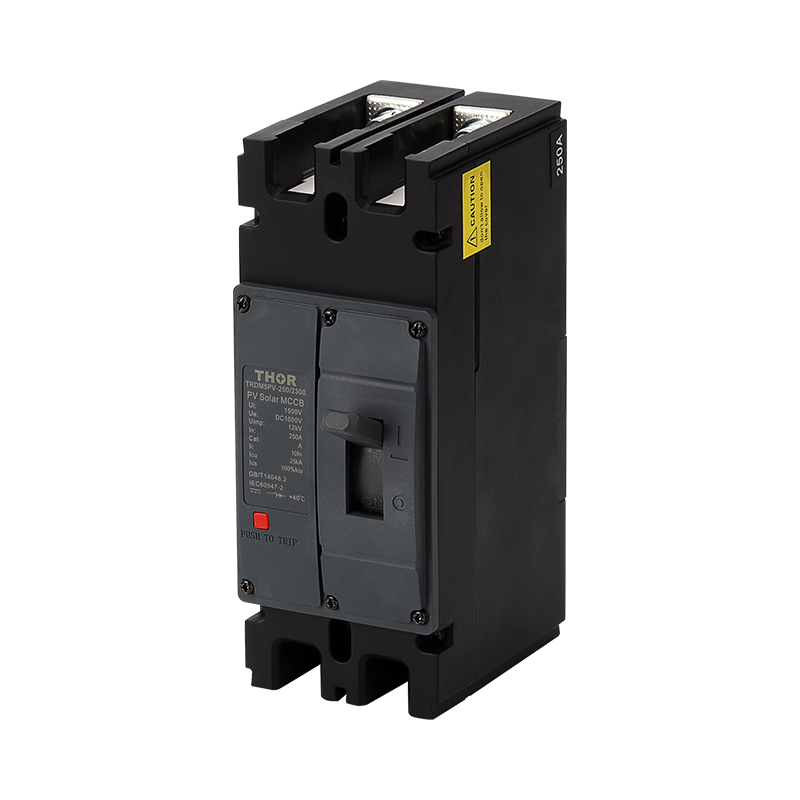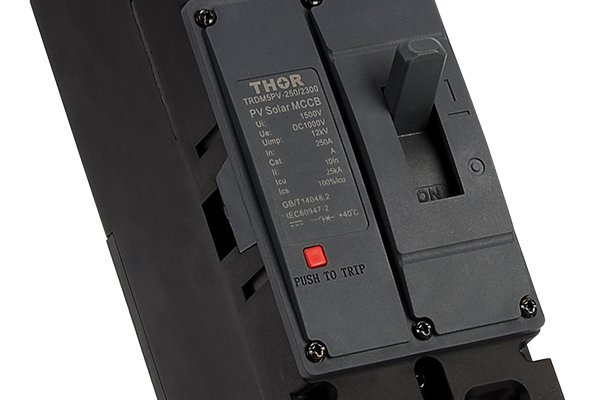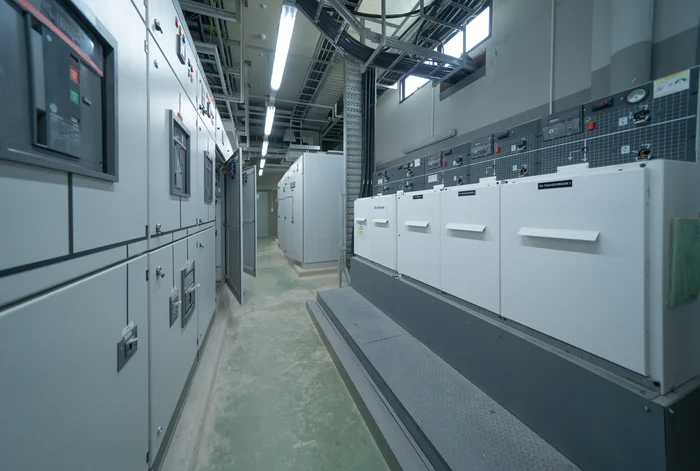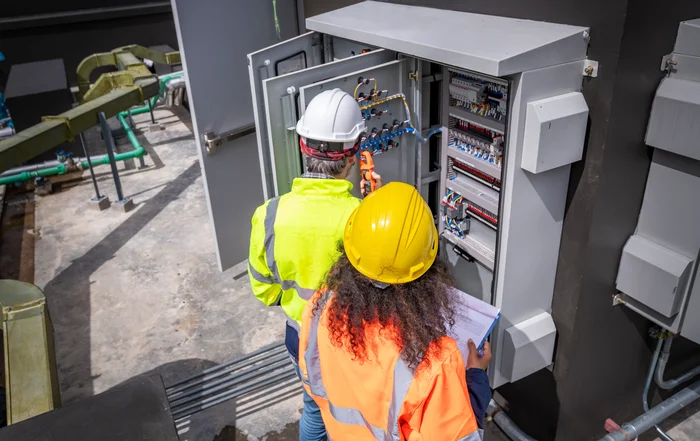Definition of Molded Case Circuit Breaker (MCCB)
A molded-case circuit breaker (MCCB) is an electrical protection device designed to safeguard circuits from overloads, short circuits, and other electrical faults. Unlike smaller breakers, MCCBs can handle higher currents, typically ranging from 100 amps to 2,500 amps, making them indispensable in industrial and commercial applications. The “molded case” refers to the durable plastic housing that insulates and protects the internal components. This robust design ensures MCCBs can operate reliably in demanding environments, like factories or large office buildings.

Comparison with Other Circuit Breakers (MCB, RCCB, ELCB)
When choosing the right circuit breaker, it’s important to understand the differences between MCCBs and other common types:
- Miniature Circuit Breaker (MCB): MCBs are designed for lower current ratings (up to 100 amps) and are typically used in residential or small-scale commercial applications. They protect against overloads and short circuits but lack the capacity and flexibility of MCCBs. Think of MCBs as the compact, everyday car—great for city driving but not built for heavy-duty tasks. 8 Difference Between MCB and MCCB
- Residual Current Circuit Breaker (RCCB): RCCBs are specialized devices that detect earth faults by monitoring the imbalance between live and neutral currents. They’re essential for preventing electric shocks but don’t offer protection against overloads or short circuits like MCCBs do. RCCBs are more like seat belts—they provide crucial safety but won’t stop your car from crashing.
- Earth Leakage Circuit Breaker (ELCB): ELCBs are older devices that detect earth faults based on voltage rather than current. While they were once widely used, RCCBs have largely replaced them due to their improved accuracy and reliability.
In short, MCCBs offer a more comprehensive solution by protecting against a wider range of faults and handling much higher current capacities than MCBs or RCCBs.
Key Features of MCCB
MCCBs come packed with features that make them versatile and highly reliable:
- Adjustable Trip Settings: One of the standout features of an MCCB is its ability to adjust the trip settings based on the specific load requirements. Whether you’re protecting a small motor or a large industrial machine, you can fine-tune the breaker to trip at just the right current level.
- Thermal-Magnetic Protection: This dual-action protection mechanism is key to MCCB’s reliability. The thermal element responds to long-term overcurrents by slowly heating up and tripping the breaker, while the magnetic element reacts instantly to severe faults like short circuits. It’s like having both a smoke detector (for slow-building issues) and a fire extinguisher (for immediate threats) in one device.
- High Interrupting Capacity: MCCBs are designed to handle high fault currents without damaging themselves or the system they protect. This makes them ideal for environments where large power surges could occur—think about protecting heavy machinery in a factory or large HVAC systems in commercial buildings.
- Durability: With their molded case construction, MCCBs are built to last even in harsh environments like industrial plants or outdoor installations. Their rugged design ensures long-term reliability with minimal maintenance.

Construction and Components of MCCB
The construction of an MCCB is both simple yet robust, ensuring it can handle tough conditions while offering reliable protection.
- Frame: The outer casing is made from molded plastic that provides insulation as well as mechanical protection.
- Contacts: These are the points where electricity flows through when the circuit is complete. When a fault occurs, these contacts separate quickly to stop the flow of electricity—kind of like slamming on the brakes when you see an obstacle ahead.
- Operating Mechanism: This includes a handle or lever used to manually operate the breaker. Inside are springs that help open or close contacts rapidly during fault conditions.
- Trip Unit: The trip unit is essentially the brain of the MCCB. It detects abnormal conditions like overloads or short circuits and triggers the breaker accordingly. Depending on your needs, this trip unit can be either thermal-magnetic or electronic.
- Arc Extinguishers: When contacts separate during a fault condition, an electrical arc forms between them. Arc extinguishers quench this arc quickly and safely, preventing damage to both the breaker and surrounding equipment.
How the MCCB Operates
The operation of an MCCB revolves around two key mechanisms: thermal tripping and magnetic tripping.
- Thermal Tripping: When there’s an overload condition, a bimetallic strip inside the breaker heats up due to excessive current flow. As it heats up, it bends until it triggers the trip mechanism, breaking the circuit. This process takes time—just enough to allow for minor fluctuations without tripping unnecessarily—but will activate if an overload persists.
- Magnetic Tripping: In cases of sudden surges in current (like during a short circuit), an electromagnet within the breaker generates enough force to pull open the contacts instantly—cutting off power before any serious damage occurs.
This dual-action mechanism ensures that MCCBs respond appropriately whether you’re dealing with gradual overloads or sudden catastrophic faults.
Types of MCCB
There are several types of MCCBs available based on their application:
- Standard MCCBs: These are used for general-purpose applications where basic protection against overloads and short circuits is required.
- Motor Protection Circuit Breakers (MPCB): Designed specifically for protecting motors from electrical faults such as overloads or phase failures, MPCBs ensure your motors don’t burn out due to electrical issues.
- Current Limiting MCCBs: These breakers limit how much current can flow during a fault condition by opening quickly enough to prevent peak fault currents from reaching dangerous levels. They’re especially useful in systems where minimizing damage during faults is critical.

Applications of MCCB
MCCBs are incredibly versatile and find use in various industries:
- Industrial Facilities: In factories with heavy machinery running continuously, MCCBs protect equipment from electrical faults that could otherwise cause costly downtime.
- Commercial Buildings: Large office complexes rely on MCCBs in distribution boards to ensure safe power distribution across multiple floors or units.
- Renewable Energy Systems: Solar power installations often use MCCBs to protect sensitive equipment like inverters from overcurrents caused by fluctuations in power generation.
- Marine Applications: Ships and offshore platforms require robust electrical systems that can withstand harsh conditions—and MCCBs fit this bill perfectly due to their durability and high interrupting capacity.
Advantages of MCCB
There are several reasons why professionals choose MCCBs over other types of breakers:
- High Current Capacity: With ratings up to 2,500 amps, they’re capable of handling much higher currents than MCBs.
- Adjustable Settings: The ability to fine-tune trip settings allows users to tailor protection according to specific load requirements—a feature not available with simpler breakers.
- Comprehensive Protection: Unlike MCBs or RCCBs, which offer limited protection types, MCCBs provide coverage against overloads, short circuits, and ground faults.
- Durability & Longevity: Built tough with molded cases designed for harsh environments, they require minimal maintenance over their lifespan.
Disadvantages of MCCB
Despite their many advantages, there are some drawbacks associated with using MCCBs:
- Cost: Due to their advanced features and higher current ratings, they tend to be more expensive than simpler devices like MCBs.
- Size: Their larger size makes them less suitable for compact installations where space is at a premium.
- Complexity: Adjusting trip settings may require professional installation or configuration—something not necessary with simpler breakers like MCBs.

The Different Testing Methods for MCCB
To ensure that an MCCB operates correctly over its lifespan, regular testing is essential. Some common methods include:
- Primary Injection Testing: By injecting high current into the breaker’s primary circuit at different levels, this test checks how quickly it trips under various conditions—ensuring it responds accurately when needed.
- Insulation Resistance Testing: This test applies high voltage across terminals while measuring any leakage current—ensuring no unwanted currents flow through insulation materials over time.
- Contact Resistance Testing: Measuring resistance across closed contacts helps identify wear or damage that could affect performance—high resistance indicates potential issues requiring maintenance or replacement.
